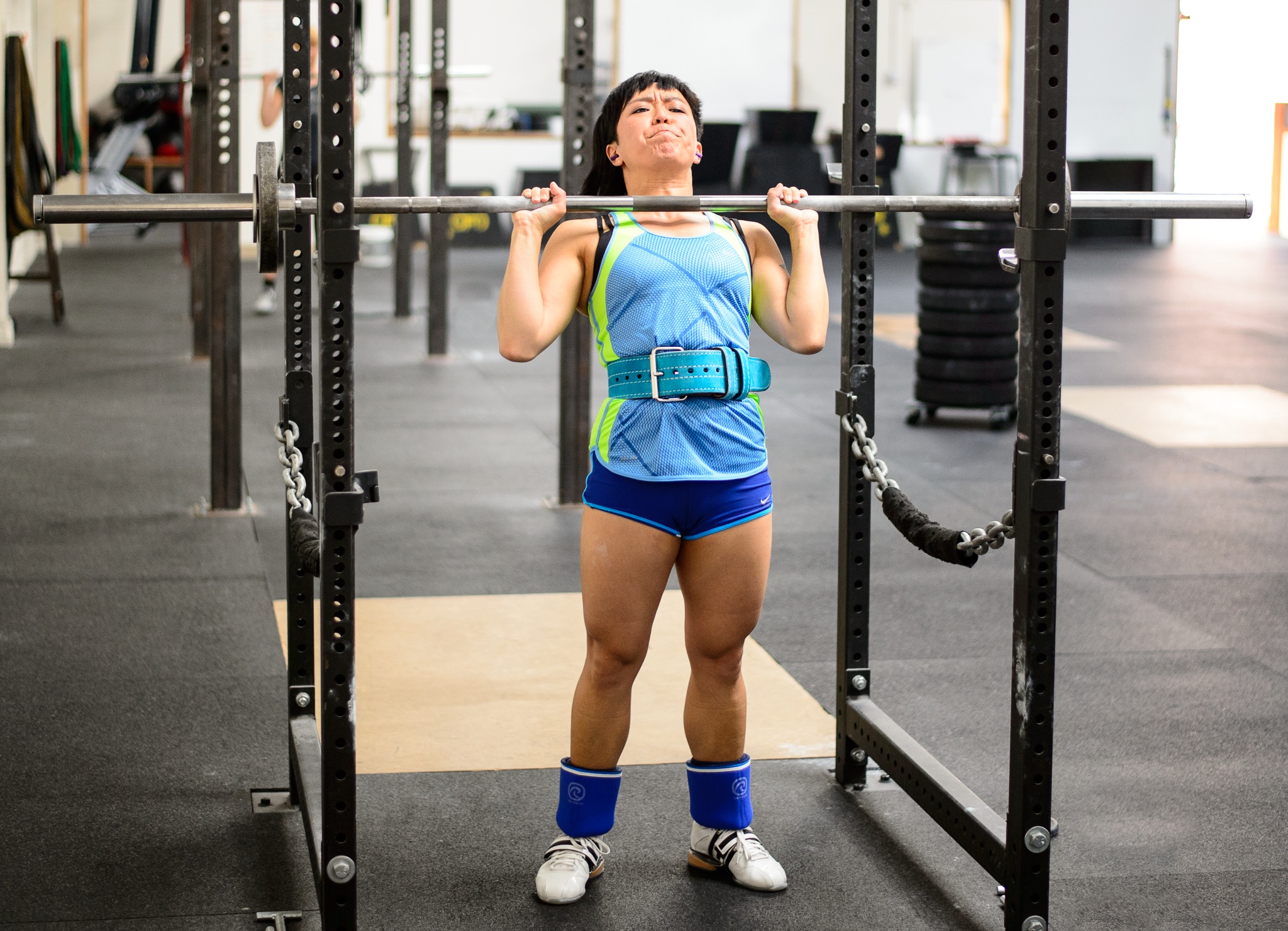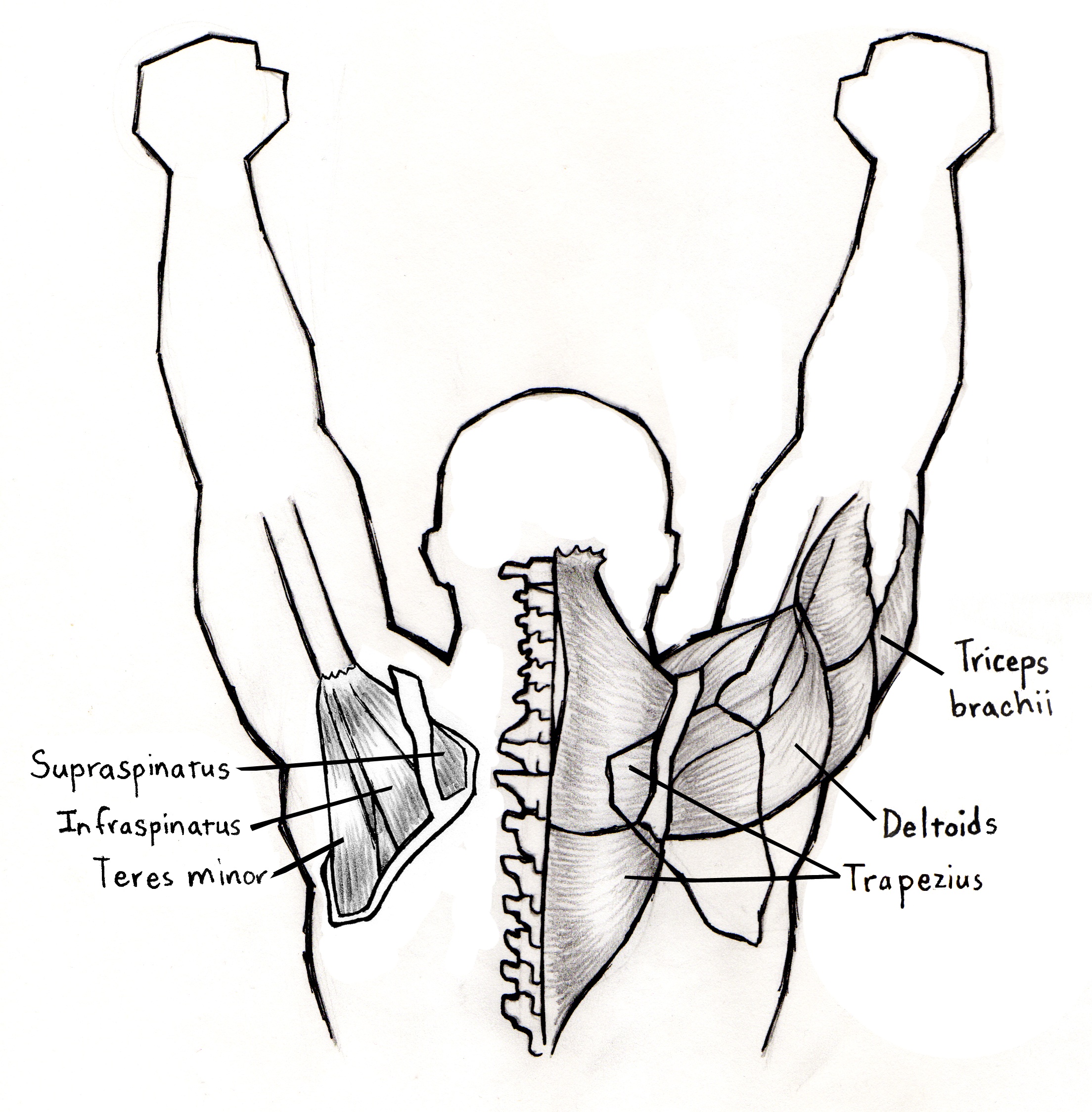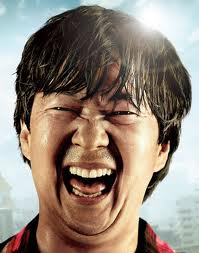Pressing a barbell overhead has somehow acquired the reputation as a dangerous exercise for the shoulders. Doctors and physical therapists routinely advise against the exercise weightlifters refer to as simply The Press on the false assumption that an injury known as "shoulder impingement" is the inevitable result. Not only is the press perfectly safe for the shoulders -- as evidenced by the fact that shoulder injuries are the least-common injuries for Olympic weightlifters who use the barbell overhead -- but the correctly performed press is the best exercise for keeping shoulders strong. Here's why.
1. Shoulder Impingement Is Misunderstood: Shoulder impingement occurs when the rotator cuff tendons get "pinched" between the head of the humerus and the AC joint, formed by the end of the collarbone and the bony knobs at the end of the shoulder blade. Impingement means an entrapment of soft tissue between two bones in the area of a joint. You can safely experience this entrapment feeling for yourself: sit or stand up straight and raise your arms from your sides to a position parallel to the floor, with the palms of your hands facing the floor and your elbows bent at 90 degrees. Now, raise them just a little more. The pressure you feel in your shoulders is the impingement of your cuff tendons against the AC.
Now, rotate your hands up so your palms face forward, elbows still at 90 degrees, and raise your hands up over your head. Then shrug your shoulders up at the top, like you're trying to reach the ceiling with your hands and shoulders. Pressure's gone, right? This is the lockout position of the press, and notice that at no time in this process did your shoulders feel impinged. This because the shrugging of the shoulders at the top pulls the AC knobs away from the head of the humerus, so that impingement is anatomically impossible in the correct press lockout position. The press simply cannot impinge your shoulders.
In fact, shoulder impingement injuries are common only in athletes that use their arms overhead without a shrug. Swimmers, volleyball players, and the racquet sports report most of the shoulder impingement injuries. They'd be far better off if they trained the press as a part of their sports preparation.
2. Why The Press Is the Best Exercise for Shoulder Strength: Since a correct press is done in a standing position, the exercise works all the muscles in the body. Everything between the bar in the hands and the feet balancing against the floor participates in the exercise. Legs, abs, and back muscles, as well as the obvious shoulder and arm muscles, all work together in a correctly performed press. Sixty years ago, the press was the primary weight room exercise for the upper body. For men who trained with weights, a bodyweight-on-the-bar press was considered a good starting point.
And back then, shoulder injuries were essentially unheard of because the press made the shoulders strong -- the whole shoulder, not just the front of the shoulder like the bench press does. The takeover of upper-body training by the bench press was an unfortunate development. The bench allows the use of heavier weights, but at the expense of the involvement of more of the body, and more balanced shoulder strength, front-to-back. As a general rule, more muscle mass working at the same time all over the body is much better for strength training than isolation exercises. The coordinated use of all the muscles while standing on the floor with a barbell in your hands produces the most useful strength adaptation -- one that actually applies to all natural human movements.
 Photo by Thomas Campitelli, copyright 2012 The Aasgaard Company
Photo by Thomas Campitelli, copyright 2012 The Aasgaard Company
3. What You Know About Rotator Cuff Muscles May Be Wrong: Physical therapists like to isolate the function of a muscle to rehab it when it's injured. The isolated function of the muscles that lie on the shoulder blade is "external rotation" of the upper arm. This motion occurs when you lay your arms down against your ribs, bend your elbows and rotate your forearms out so that your palms face forward. Your humerus rotates "externally" along its axis when you do this, and the rotator cuff muscles make this happen in isolation.
The question is: what is the normal daily role of a rotator cuff muscle? Does it make your shoulder externally rotate, and that's all? Or does it primarily function as a muscle group that stabilizes the head of the humerus in its socket, the "glenoid fossa"? Think about it another way: who named it "external rotator"? God? Or physical therapists? Maybe a better name for it would be the keeps-the-arm-in-the-shoulder-ator, and it also just happens to externally rotate the arm. When you're not in physical therapy, the rotator cuff muscles are just another muscle group that helps hold the shoulder together.
 Graphic by Jason Kelly, copyright 2012 The Aasgaard Company4. There Is No Single Muscle Group in the Entire Human Body That Works in Isolation as Its Normal Function: Not even your tongue. It therefore makes no sense to train muscles in a way in which they do not function. Physical therapists may be able to isolate your rotator cuff muscles, but you may have noticed that this motion is not a normal part of your day.
Graphic by Jason Kelly, copyright 2012 The Aasgaard Company4. There Is No Single Muscle Group in the Entire Human Body That Works in Isolation as Its Normal Function: Not even your tongue. It therefore makes no sense to train muscles in a way in which they do not function. Physical therapists may be able to isolate your rotator cuff muscles, but you may have noticed that this motion is not a normal part of your day.
If the cuff muscles work during a press (they do), and if they are aided in their function by all the other muscles in the shoulder (they are), then as the progressively heavier press makes the shoulder stronger, it makes the rotator cuff muscles stronger too. It is much better to strengthen the cuff muscles while their shoulder-muscle friends help lock out a press, than when they are made to work all alone, all by their skinny little selves in the PT office.
So, if you start pressing with a light weight and grow stronger by adding a little weight each time you train, all the muscles you use in the press get stronger. From your hands to your feet, and even your rotator cuff muscles, your whole body benefits from this perfectly safe and very important exercise. Once you're able to handle heavy weights correctly overhead, you'll know that strong shoulders are healthy shoulders, and the best way to make them strong is to use them correctly, by pressing the barbell overhead.
http://www.huffingtonpost.com/mark-rippetoe/the-overhead-press_b_4550676.html
1. Shoulder Impingement Is Misunderstood: Shoulder impingement occurs when the rotator cuff tendons get "pinched" between the head of the humerus and the AC joint, formed by the end of the collarbone and the bony knobs at the end of the shoulder blade. Impingement means an entrapment of soft tissue between two bones in the area of a joint. You can safely experience this entrapment feeling for yourself: sit or stand up straight and raise your arms from your sides to a position parallel to the floor, with the palms of your hands facing the floor and your elbows bent at 90 degrees. Now, raise them just a little more. The pressure you feel in your shoulders is the impingement of your cuff tendons against the AC.
Now, rotate your hands up so your palms face forward, elbows still at 90 degrees, and raise your hands up over your head. Then shrug your shoulders up at the top, like you're trying to reach the ceiling with your hands and shoulders. Pressure's gone, right? This is the lockout position of the press, and notice that at no time in this process did your shoulders feel impinged. This because the shrugging of the shoulders at the top pulls the AC knobs away from the head of the humerus, so that impingement is anatomically impossible in the correct press lockout position. The press simply cannot impinge your shoulders.
In fact, shoulder impingement injuries are common only in athletes that use their arms overhead without a shrug. Swimmers, volleyball players, and the racquet sports report most of the shoulder impingement injuries. They'd be far better off if they trained the press as a part of their sports preparation.
2. Why The Press Is the Best Exercise for Shoulder Strength: Since a correct press is done in a standing position, the exercise works all the muscles in the body. Everything between the bar in the hands and the feet balancing against the floor participates in the exercise. Legs, abs, and back muscles, as well as the obvious shoulder and arm muscles, all work together in a correctly performed press. Sixty years ago, the press was the primary weight room exercise for the upper body. For men who trained with weights, a bodyweight-on-the-bar press was considered a good starting point.
And back then, shoulder injuries were essentially unheard of because the press made the shoulders strong -- the whole shoulder, not just the front of the shoulder like the bench press does. The takeover of upper-body training by the bench press was an unfortunate development. The bench allows the use of heavier weights, but at the expense of the involvement of more of the body, and more balanced shoulder strength, front-to-back. As a general rule, more muscle mass working at the same time all over the body is much better for strength training than isolation exercises. The coordinated use of all the muscles while standing on the floor with a barbell in your hands produces the most useful strength adaptation -- one that actually applies to all natural human movements.

3. What You Know About Rotator Cuff Muscles May Be Wrong: Physical therapists like to isolate the function of a muscle to rehab it when it's injured. The isolated function of the muscles that lie on the shoulder blade is "external rotation" of the upper arm. This motion occurs when you lay your arms down against your ribs, bend your elbows and rotate your forearms out so that your palms face forward. Your humerus rotates "externally" along its axis when you do this, and the rotator cuff muscles make this happen in isolation.
The question is: what is the normal daily role of a rotator cuff muscle? Does it make your shoulder externally rotate, and that's all? Or does it primarily function as a muscle group that stabilizes the head of the humerus in its socket, the "glenoid fossa"? Think about it another way: who named it "external rotator"? God? Or physical therapists? Maybe a better name for it would be the keeps-the-arm-in-the-shoulder-ator, and it also just happens to externally rotate the arm. When you're not in physical therapy, the rotator cuff muscles are just another muscle group that helps hold the shoulder together.

If the cuff muscles work during a press (they do), and if they are aided in their function by all the other muscles in the shoulder (they are), then as the progressively heavier press makes the shoulder stronger, it makes the rotator cuff muscles stronger too. It is much better to strengthen the cuff muscles while their shoulder-muscle friends help lock out a press, than when they are made to work all alone, all by their skinny little selves in the PT office.
So, if you start pressing with a light weight and grow stronger by adding a little weight each time you train, all the muscles you use in the press get stronger. From your hands to your feet, and even your rotator cuff muscles, your whole body benefits from this perfectly safe and very important exercise. Once you're able to handle heavy weights correctly overhead, you'll know that strong shoulders are healthy shoulders, and the best way to make them strong is to use them correctly, by pressing the barbell overhead.
http://www.huffingtonpost.com/mark-rippetoe/the-overhead-press_b_4550676.html

